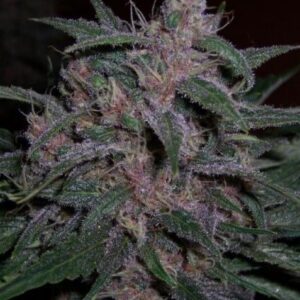Description
What Strain Is Sour Diesel?
Sour Diesel, or “Sour D” for short, is a highly sought-after fast-acting strain known for its potent effects. With a Sativa to Indica ratio of 90:10, it delivers a powerful cerebral high that’s both energizing and euphoric. This strain is said to be a descendant of Chemdawg 91 and Super Skunk and was originally created in the 1990s in California. Its distinct aroma features notes of diesel and citrus, making it a favorite among connoisseurs. Whether you’re looking for a creative boost or a mood uplift, Sour Diesel is the perfect strain to add to your collection.
Aroma
Sour Diesel strain profile is characterized by a unique blend of sour and tangy scents, accompanied by a subtle hint of sweetness. Occasionally, it may exude a faint spicy or skunky fragrance, although its diesel undertones are seldom perceived. Notably, this strain possesses one of the most pungent and assertive aromas among its counterparts, reminiscent of Diesel Gas with a tinge of zesty lemon.
Flavor
Sour Diesel strain characteristic fragrance translates seamlessly into its flavor profile, featuring robust and tangy notes with a lingering sweetness on the palate. When consumed, one can anticipate a seamless and velvety smoking experience, culminating in a subtle yet refreshing hint of lemon aftertaste.
Appearance
Sour Diesel strain appearance is striking, boasting vivid hues of bright green and shimmering trichomes that glisten in the light. Its foliage comprises deep green leaves adorned with delicate white trichomes covering the calyxes. As the strain approaches maturity, thin reddish hairs begin to emerge, signaling the optimal time for harvesting.
Sour Diesel Strain Feminized Specifications |
|
| Strain Parents: | Unidentified |
| Strain Dominant: | Sativa-dominant |
| CBD Content: | 0.2% |
| THC Content: | 20% to 25% |
| Flowering Time: | 9-10 weeks |
Sour Diesel Strain Growing Information
Successfully growing Sour Diesel strain requires attentive care and meticulous attention to detail, particularly concerning soil quality, lighting, temperature, humidity levels, watering, and fertilization. To achieve the best results, it’s crucial to utilize clean soil, as this strain is vulnerable to latent hop viroid. Adequate lighting and temperature control are also essential, as Sour Diesel necessitates ample heat and sun exposure, making continuous sunlight crucial.
Regulating humidity levels is crucial to prevent moisture buildup, which can lead to mold growth. Careful watering practices are equally vital, as this strain is susceptible to root rot. Additionally, incorporating fertilizer into the growth process is essential for ensuring optimal growth and development.
While it is feasible to cultivate Sour Diesel indoors, it’s highly recommended to grow this strain outdoors for optimal yields. Outdoor plants can take up to 11 weeks to flower, producing up to 18 ounces per 10 square feet planted. Due to its Sativa-dominant nature, Sour Diesel may grow tall and lanky, and during the flowering phase, multiple stretches can make it challenging to manage. Therefore, providing sufficient space and support is imperative for the plants to thrive. By following these guidelines, cultivators can expect a robust harvest of premium quality Sour Diesel.
Final Thoughts
Sour Diesel strain distinguished lineage, with origins tracing back to Chemdawg 91 and Super Skunk, has contributed to its widespread popularity as a go-to strain for enhancing creativity and elevating mood. To achieve the best possible results, growers must provide optimal growing conditions that include clean soil, appropriate lighting and temperature, regulated humidity levels, precise watering practices, and proper fertilization.
FAQs
Q: What is the lineage of Sour Diesel?
A: Sour Diesel is believed to be a descendant of Chemdawg 91 and Super Skunk.
Q: What is the THC content of Sour Diesel?
A: Sour Diesel typically has a high THC content, ranging from 20% to 25%.
Q: What are the growing conditions for Sour Diesel?
A: Sour Diesel requires clean soil, proper lighting and temperature, adjusted humidity levels, correct watering, and fertilization for optimal growth.





